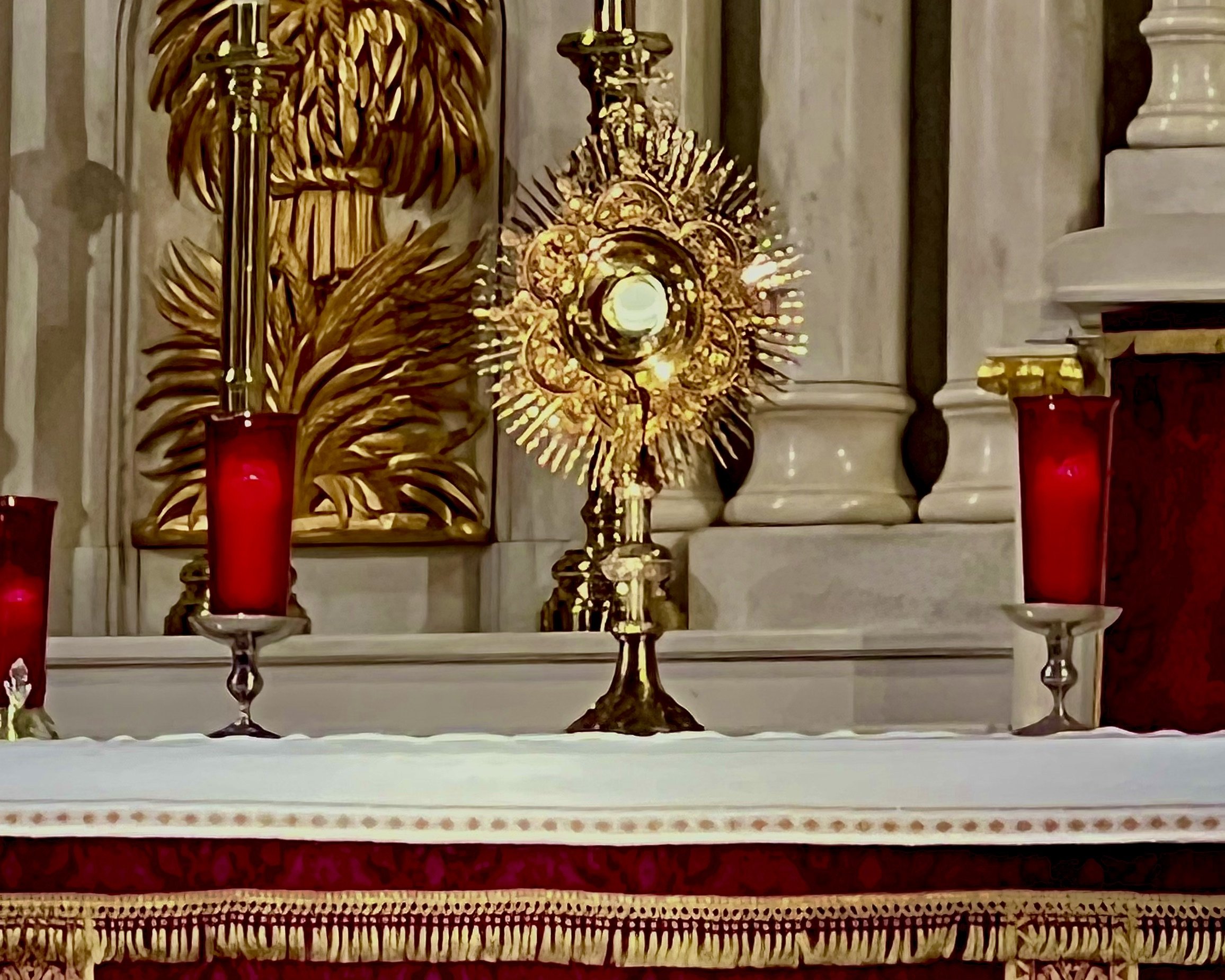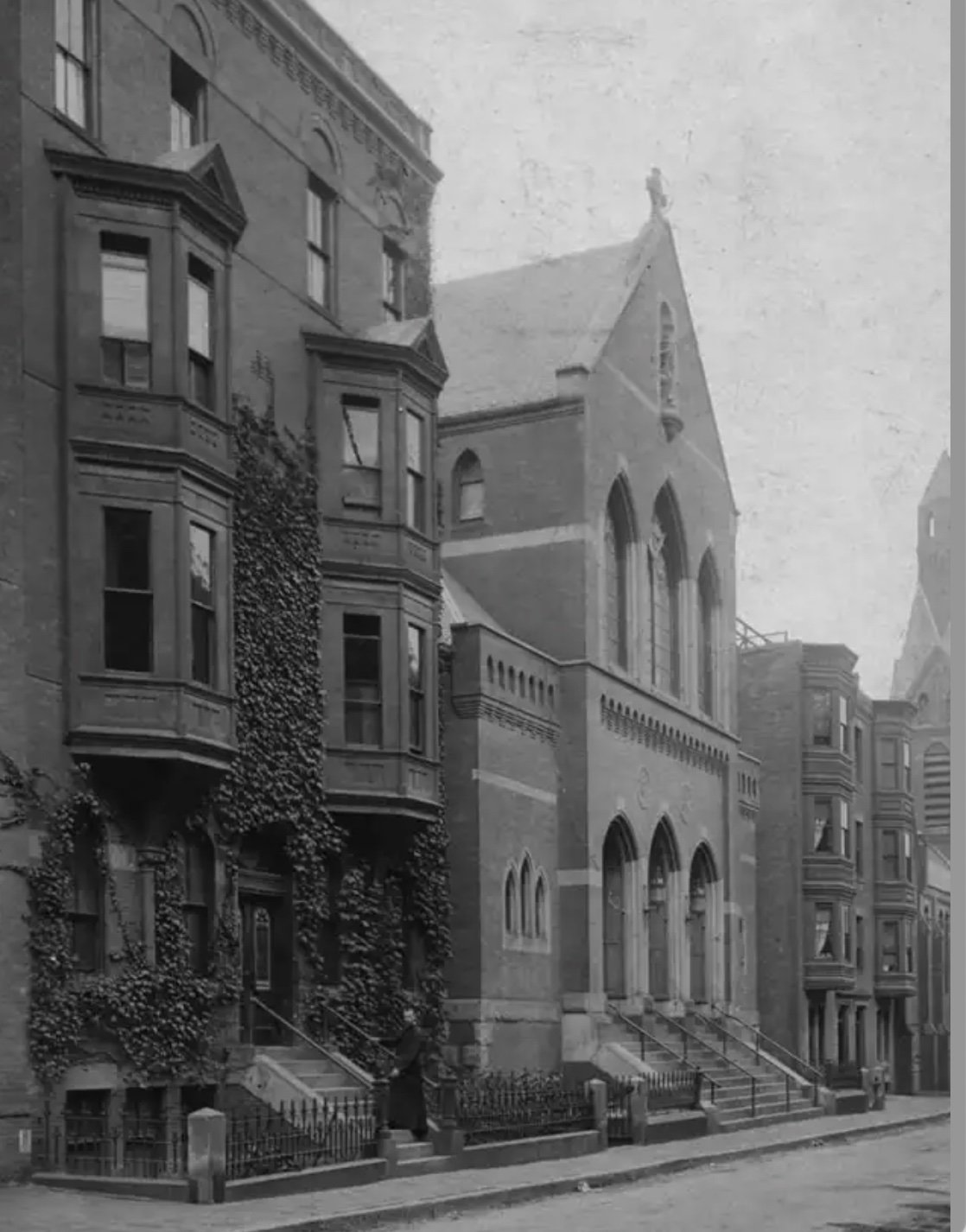Sacred Art’s Mysterious Call to the Heart
Beauty creates a longing for transcendent realities. As poet Dana Gioia wrote in the essay quoted below, "art is mysterious. It reaches us in ways we don’t fully understand.”
This ability of sacred art to call our hearts and prepare our minds to receive truth is something we need to bring into the discussion as the Church ponders how to help the appallingly large number of Catholics who either were never taught or never believed or lost belief—for whatever reason—in the presence of Christ in the Eucharist.
Dana Gioia wrote in SINGING AQUINAS IN L.A. at First Things about how while he was at Benediction[1] with his parochial school classmates every month, both the grand space of the church in the ugly neighborhood of his childhood and the sublimity of the Tantum Ergo, which is one of the great hymns of humble adoration of the Eucharist composed by intellectual giant St. Thomas Aquinas, taught him far more than mere words could ever do.
"The Eucharist was mostly an abstract idea. I sensed a sanctity in which I could not participate. But as I stood singing this short hymn with all my friends and teachers, I physically felt enraptured and exhilarated in the act of veneration. . . .
"I do know from my earliest memories that Tantum Ergo struck me as penetratingly sublime. Those two minutes of each month were more beautiful than anything outside the church doors on the ugly streets of my hometown. The hymn acquired private meaning—a web of deep longings and associations, of intellectual and spiritual awakenings that I didn’t yet understand. . . .
"My particular affection for the hymn probably originates in a combination of personal and impersonal factors. First, there was the resonant beauty of Aquinas’s verse set to the stately eighteenth-century tune by Samuel Webbe. Second, there was my personal experience of singing the words repeatedly for years with my friends in the first grand space I had ever seen. Finally, there was the mystery of the Eucharist, which I first understood not from theological instruction but through the beauty of song.
"As an artist, I learned something else from the Latin hymns—that art is mysterious. It reaches us in ways we don’t fully understand."
I had a somewhat similarly transforming experience at Benediction as a child. Mine was on the opposite coast, in Boston at Our Lady of Victories Shrine, the dearest, most-charming church I remember from my unsettled childhood when my sisters and I were moved without much explanation from one living place to another in and around Boston, sometimes with our widowed mother, sometimes with relatives when our mother was gon and nobody told us where. Sad to say, Our Lady of Victories Church was suppressed in 2017 and sold to a developer, who plans to redesign and add luxury condos to the existing building. Below left: Our Lady of Victories Church in the 20th century. Below right: Planned condominium design.
I remember Our Lady of Victories from somewhere around 1949 or 1950, when I was about five years old. I went there with my thirty-two-year-old mother, four year old sister Martha, and two and a half year old sister Joe-anne, just once for Benediction on a Sunday evening. All of us dressed in our Sunday-best-albeit-a-bit-shabby dresses, hats, and gloves. My sisters and I trailed after my mother on the half mile’s walk along the mostly empty Sunday streets from where we lived for a few months in a few small rooms with a bathroom we shared with the neighbors on the wrong side of the tracks from posh Copley Square. Something especially charmed me about the name Isabella and about the look of the dead-end street where the church was located, which was lined with red brick row houses similar to where we were staying on dead-end Dartmouth Place, but better kept.
Halfway down the block on Isabella Street, we found a side door on the left side of the church and made our way down a dark stairway into a basement chapel, which was sumptuously decorated, hushed, and dim.
It seems to me that every church I ever visited as a child had a basement chapel like that, which was as beautifully decorated as the main church upstairs. There were so many Catholics at Sunday Masses that multiple Masses had to be celebrated at the same time!
Whenever I go to Benediction, I still recall moments of that evening in perfect detail. We sat about 1/3 of the way back on the right of the main aisle. As usual, I was on my mother's right side with my sisters forming their unjoinable group of two on the left. When the Blessed Sacrament was placed on the altar for adoration, I feasted my eyes on the monstrance that looked like a golden sunburst with the host as its pure white glowing center. I loved the singing of O salutaris Hostia and Tantum Ergo. I can vouch from a five year old's perspective that even though I didn't understand most of the words, both these hymns powerfully moved me.
That Benediction brought me to appreciation for the beauty of the rite, the ranks of votive candles flickering in front of the statues of the saints and the tall ones in candlesticks on the main altar, the marble, the gilt, the bronze, and the vestments, in addition to the superb Latin hymns.
There I enjoyed for the first time the bittersweet longing that beauty awakens in the soul, although it took many more years for me to correctly identify what I was longing for.
It is far from true that beautiful, richly decorated churches take away from the poor. On the contrary, they offer everyone a refreshing oasis in the aesthetic desert of the rest of our lives.
The restoration of beauty to our churches and our liturgies, the beauty of profound music either directly from or at least harmonious with the Church’s sacred treasury of chant and polyphony, the beauty of solemn ritual, decor, reverence, and a sense of mystery—on top of the clear catechesis like the kind I received and I’m sure Dana Gioia received, all could go a long way towards restoring people’s faith in the sacramental reality of the Word of God made flesh to eat and blood to drink that occurs during transubstantiation.
[1] “Benediction of the Blessed Sacrament . . . is ordinarily an afternoon or evening devotion and consists in the singing of certain hymns . . . before the Blessed Sacrament, which is exposed upon the altar in a monstrance and is surrounded with lights. At the end, the priest, his shoulders enveloped in a humeral veil, takes the monstrance into his hands and with it makes the sign of the cross (hence the name Benediction) . . . over the kneeling congregation. . . . The use of incense and wax candles, which even in the poorest churches must not be less than ten in number, the singing of the ‘Tantum ergo" with its versicle and prayer, and the blessing given with the Blessed Sacrament are obligatory everywhere.”—Thurston, H. (1907). Benediction of the Blessed Sacrament. In The Catholic Encyclopedia. New York: Robert Appleton Company. Retrieved February 12, 2023 from New Advent: http://www.newadvent.org/cathen/02465b.htm





